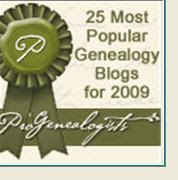About 25 years ago, if you came from Eastern Europe, you were told you can't do any research, said Sephardic genealogy pioneer Dr. Jeffrey S. Malka. "Sephardic genealogy is in the same place now."
The potential today is better than ever, he said, with more accessible archives in many countries, although Spanish and Turkish Ottoman Empire archives are still underutilized.
Not so long ago, says Malka, Sephardim were a majority in European Jewry. "In the Roman Empire, they were 25% of the Eastern Mediterranean population, and 20% of the entire Roman Empire population, about 8 million Jews worldwide. As late as the 12th century, Sephardim were 90% of world Jewry. When Toledo and Granada had 12,000 Jews each, the two largest German communities counted only 700 and 1,500 individuals."
As Sephardim suffered from conversions, persecutions, exiles and dispersion, their numbers fell to 50% of the world Jewish population by the 1700s.
“It is not a stretch to see that if Ashkenazim could trace their roots, they would find Sephardim,” Malka stressed. “This has already been discovered in rabbinic genealogy.”
Spanish archives hold approximately 3,000 notarial records per year per town, with Jews clearly identified, he said. The records aren’t hard to read once researchers become familiar with the handwriting, but they must understand historic spelling, naming conventions and languages.
Using his own family research as an example, he said that Malka in Hebrew is queen, but the Malka in his last name is Aramaic (spelled with an aleph) and means king. He traced the 1482 sale of a house in Toledo, in which all records referred to a single individual with many name variations: Aben Malka, Aben Maleque, Abenmaleq, Abenmalek, Aben Rey. Malka is Aramaic, Maleque/Maleq is Arabic and Rey is Castillian. All mean “son of Malek.”
Researchers should identify the original names of Conversos in various communities. Some are currently available in books on Barcelona, Mallorca and other places.
For other countries:
* Italy: Largely unstudied, although Nardo Bonomi of Florence is now working on archiving Jewish records.
* Egypt: Records remain inaccessible, with permission refused by elderly leaders. “It is imperative that backup copies be preserved,” Malka said. “In the past, fire destroyed a portion, and mice are eating the rest.” A very small portion of the records are at Yeshiva University. Stones from Cairo’s oldest cemetery have been used in construction.
* Curacao: Cemetery inscriptions were fortunately published long ago. Today, because of erosion, many are illegible, and the only source is the original research.
In many countries, village cemeteries are ignored and should be documented. Some have been documented by academics who refuse to share their work.
Most research is done by amateurs, said Malka, adding that they should be assisted through development of Sephardic genealogy tools, linguistics, methodology, record-keeping and documentation of sources
Researchers require knowledge of Hebrew, Arabic, Ladino, Spanish, and the ability to read Sephardic scripts. Malka also suggested that Israeli schools might teach the unusual scripts to develop a field of fluent Hebrew speakers who can read ancient records.
Malka’s recommendations: Elderly Sephardim should be interviewed; cemeteries should be photographed and documented; at-risk records should be copied; archives in Spain and Italy should be catalogued; name variants, geographic prevalence and sources should be developed; a Sephardic Jewish genealogical curriculum and access tools should be created; and support is needed for Mizrahi genealogy (Oriental Jews of Syria, Iraq, Iran, Afghanistan, etc.).
15 September 2006
Subscribe to:
Post Comments (Atom)





































No comments:
Post a Comment